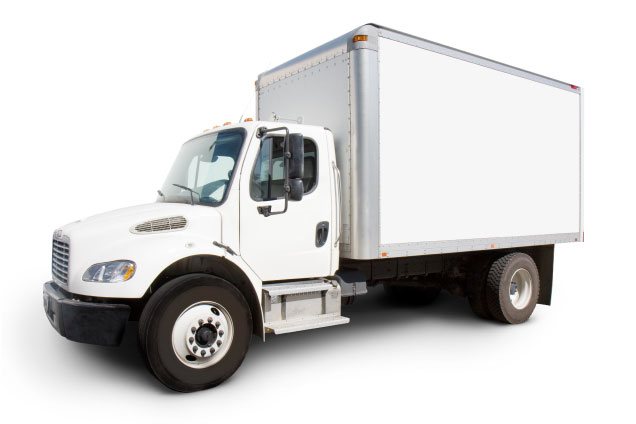Properly Preserving Your Unused Freezer
Posted on 20/06/2025
Properly Preserving Your Unused Freezer: The Ultimate Guide
Freezers are essential appliances in almost every household, helping you store food for extended periods and save money by buying in bulk. But what happens when you suddenly have an unused or extra freezer that you don't need right now? Leaving a freezer idle for weeks or months without preparing it correctly can lead to unwanted odors, mold, energy waste, or even permanent damage to the appliance. This comprehensive guide will teach you the best ways to preserve your unused freezer, keeping it clean, functional, and ready for use when needed.

Why Is It Important to Preserve an Unused Freezer?
Before diving into best practices for freezer preservation, it's critical to understand what can go wrong if your appliance is neglected:
- Odor and Mold Growth: Leftover moisture, even in a seemingly clean freezer, can prompt mold and mildew growth, causing unpleasant smells and potential health risks.
- Mechanical Issues: Allowing your freezer to sit unused without proper care may affect motors, seals, and other internal parts.
- Reduced Lifespan: An improperly maintained freezer might not last as long, resulting in avoidable repair or replacement costs.
- Pest Infestation: Small food particles can attract insects or rodents, who might nest in or around your appliance.
- Energy Waste: Keeping an empty freezer running wastes electricity and increases your utility bill.
Properly preserving an unused freezer ensures it remains in optimal shape, whether you're storing it for a few weeks, months, or even years.
Steps to Prepare Your Freezer for Unused Storage
To maximize the lifespan and efficiency of your unused freezer, follow these step-by-step instructions:
1. Unplug and Empty the Freezer
- Remove all items from your freezer. Double-check trays, compartments, and drawers for forgotten food.
- Unplug the freezer from the outlet to ensure safety while cleaning and to prevent energy waste.
2. Defrost the Freezer Completely
- Allow any existing ice or frost to melt. This step is crucial for both upright and chest freezers.
- Place towels or a shallow pan underneath to absorb water runoff and prevent a mess.
Tip: The defrosting process may take several hours; speeding it up with bowls of hot water inside can help.
3. Thoroughly Clean and Sanitize
- Wash all interior surfaces--including shelves, baskets, and gaskets--with a solution of warm water and mild soap or baking soda (about one tablespoon per quart of water).
- Pay special attention to door gaskets, as they often trap crumbs and moisture.
- Rinse everything with clean water and dry fully with a soft cloth.
- For stubborn odors, use a mixture of vinegar and water or leave an open box of baking soda inside for several hours before removing.
Never use harsh chemicals or abrasives, as these can damage the freezer's finish and internal components.
4. Allow the Freezer to Dry Completely
- Moisture left behind can encourage mold growth and cause odors.
- Leave the freezer door open for several hours or even a day in a well-ventilated room until all surfaces are dry to the touch.
5. Secure the Door
- Keep the door ajar: After cleaning and drying, leave the door slightly open with a towel, block, or custom spacer to permit airflow. This step is crucial to prevent mustiness or mildew.
- Alternative method: If leaving the door open isn't possible due to space limitations or pets/children, regularly check and air out the freezer, or use moisture-absorbing products inside (like silica gel packs or baking soda boxes).
6. Store in a Safe Location
- Ideally, place the unused freezer in a dry, ventilated area--such as a basement, garage, or utility room.
- Avoid damp, non-insulated spaces that are prone to temperature fluctuations, which can lead to rust or electronics issues.
- If storing in a garage, cover the appliance with a breathable cloth to prevent dust accumulation while still allowing airflow.
7. Protect Power Cord and Plug
- Coil the power cord loosely and secure it with a Velcro strap or twist-tie. Avoid sharp bends or pressure points.
- Keep the plug off the floor to avoid contact with water or pests.
Should You Keep the Unused Freezer Plugged In?
Some may wonder whether it's better to leave a freezer plugged in, even if empty. In most cases, unplugging the freezer is best to conserve energy and reduce fire risk. However, if your freezer will be unused for only a few days--such as during a deep clean or before repurposing--you may keep it running at a low setting and place a baking soda box inside for absorption.
For long-term preservation, always unplug and follow all cleaning and ventilating steps to avoid any complications when bringing the appliance back into use.
Maintaining an Unused Freezer During Extended Storage
Preserving a dormant freezer isn't just about preparation; it requires ongoing attention if stored for many months or years.
Monthly Maintenance Checklist
- Check both inside and outside for any signs of mildew, mold, or rust.
- Ensure the door remains ajar and the interior stays dry.
- Verify no pests have entered or nested around the appliance.
- Refresh the baking soda box or moisture absorber every couple of months.
- If you notice any musty smells, repeat the cleaning and drying process.
Seasonal Considerations
- Garages and sheds can reach extreme temperatures in summer or winter, potentially causing cracks in plastic, brittle seals, or coolant leaks.
- If possible, move the freezer indoors during temperature extremes, or insulate the space as well as possible.
Protecting the Exterior
- Wipe exterior surfaces with a damp cloth every few months to clear dust and debris.
- Inspect for signs of rust, particularly on older appliances or those stored in humid environments.
- Apply a light coat of rust-inhibiting spray or lubricant to hinges, if accessible.
Reviving Your Freezer After Long-Term Storage
When the time comes to reuse your previously idle freezer, don't simply plug it in--take a few extra steps for safety and efficiency:
- Inspect Before Use: Double-check for odor, visible mold, insect activity, or rust damage.
- Clean Again: Even if the freezer looks clean, wipe all surfaces with a vinegar-water solution, then rinse and dry.
- Reconnect Carefully: Verify the cord and plug are in good condition and that the outlet is safe.
- Power Up Empty: Plug in the freezer and let it run empty for at least 2-4 hours. Monitor for unusual noises or performance issues.
- Test Temperatures: Place a thermometer inside to ensure it quickly reaches and maintains proper freezing temperatures (typically 0?F or -18?C).
Common Mistakes When Storing an Unused Freezer (And How to Avoid Them)
Even with the best intentions, it's easy to overlook key steps in preserving an unused freezer. Here are common pitfalls and solutions:
- Leaving Traces of Food: Even small crumbs or drips can foster mold and odors. Be meticulous during cleaning.
- Neglecting Door Gaskets: These can crack or mold when dirty and closed for long periods. Always clean and keep them dry.
- Sealing the Freezer Airtight: Never tape or lock the door fully closed during storage--this is a surefire way to develop smells or even damage gaskets.
- Forgetting About It: Mark your calendar to inspect and air the freezer regularly while not using it.
- Using Harsh Cleaners: Avoid bleach or ammonia, which can damage plastic and rubber.
Additional Tips for Proper Freezer Preservation
- Label the Appliance: If stored in a shared or multi-use area, consider labeling the freezer as "Clean--Not in Use" to avoid accidental use or confusion.
- Use a Dehumidifier: In damp environments, a small dehumidifier nearby can help control moisture and prevent rust.
- Cover with a Cloth: Prefer a lightweight, breathable cloth cover over plastic tarps, which can trap humidity.
- Store Vertically: Keep upright freezers vertical; never lay them on their side, which can damage the compressor and internal components.
- Keep Away from Direct Sunlight: UV rays and heat can age exterior plastic and paint.

FAQs About Unused Freezer Preservation
Can an unused freezer be stored in cold weather?
Yes, with precautions. Many freezers are designed for indoor use only; extreme cold may cause the oil in the compressor to thicken and impair function. If storing in an unheated garage or outbuilding, insulate the appliance and monitor temperature swings.
Is it safe to lock the freezer during storage?
No. Locking or tightly closing the door promotes mold and mildew. Always allow for air circulation.
Do I need to lubricate freezer components during storage?
For most residential freezers, routine lubrication isn't necessary. However, hinges or exposed metal can benefit from a light rust-inhibitor spray before long-term storage in humid areas.
How long can a freezer sit unused?
With proper preservation, a freezer can sit unused for many months or even years. Regular check-ups and maintenance are vital to ensure it's always ready for reactivation.
Conclusion: Ensure Longevity by Preserving Your Unused Freezer Properly
Properly preserving an unused freezer is crucial for protecting your investment and ensuring you have an efficient, odor-free, and trouble-free appliance ready for use.
By following the checklist and tips in this guide--cleaning, drying, ventilating, and checking regularly--you'll avoid the most common pitfalls and maintain peace of mind. Whether you're storing your freezer for just a season or the long haul, thoughtful preparation makes all the difference.
If you found these tips helpful, consider sharing this guide or bookmarking it for future reference. Your effort today guarantees your freezer will serve you well again tomorrow!





